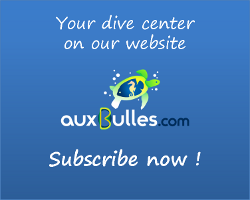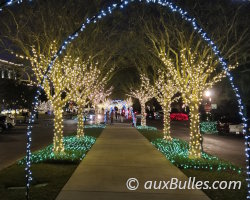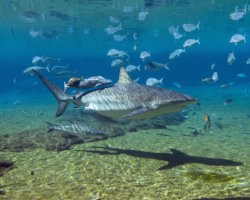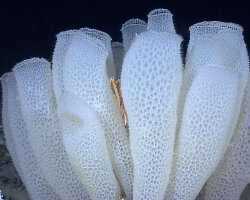Sealife guideThe Atlantic spadefishChaetodipterus faber
Last updated on 08/23/2024 at 11:53 PM

The Atlantic spadefish (Chaetodipterus faber)
Taxonomy
- Common name: Atlantic spadefish
- French name: Platax de l'Atlantique, disque portuguais
- Spanish name: Chabela
- Scientific name: Chaetodipterus faber (Broussonet, 1782)
- Family name: Ephippidae
- Order name: Perciformes
- Class name: Actinopterygii
Description
The Atlantic spadefish has a disk-shaped, flattened body that is silver-gray with three to six broad, dark vertical stripes, resembling a « prisoner » which fade with age to the point of nearly disappearing. The first large black stripe runs vertically across its head, near its eye.

The Atlantic spadefish is dressed in its prisoner attire, featuring a silver-gray body adorned with broad black stripes !
The Atlantic spadefish gives aquarists a sense of déjà-vu with its striking resemblance to a larger version of a freshwater angelfish !
Its head is slightly rounded, and its snout is small compared to the rest of its body. The dorsal and anal fins at the back of the body each have a black leading edge that ends in a point. Aside from its color, its overall appearance resembles a « spade » which is the origin of its english name.
The Atlantic spadefish is a large fish, averaging about 20 inches in length with a maximum size reaching up to 35 inches and a maximum weight of 20 pounds !
Geographic range
It is found in the subtropical and tropical waters of the western Atlantic Ocean, from the southern part of
Florida in the north to the northern coasts of South America in the south. The Atlantic spadefish is also present in the Gulf of Mexico and along the coasts of various Caribbean islands, especially in the northern areas like the Keys or the Bahamas.
Habitat
The Atlantic spadefish frequents subtropical and tropical waters near coral reefs, shipwrecks, and oil platforms in the Gulf of Mexico. It is commonly found from the surface down to about 100 feet deep.
It lives in pairs or in schools of a few to several hundred individuals.
Diet
The Atlantic spadefish primarily feeds on small invertebrates living on the seafloor, such as small shrimp,
mollusks and
marine worms.
Reproduction
It reproduces sexually, with its breeding season occurring between May and August.
Juveniles inhabit shallow coastal waters where they can take refuge in mangroves. At this stage, their color is dark brown to black with white marbling for better camouflage.
Did you know ?
The atlantic spadefish is listed as many other marine species within The
IUCN Red List of threatened species. The atlantic spadefish appears in the
IUCN Red List since 2015 within the category Least Concern !

The Atlantic spadefish lives in pairs or in schools of a few to several hundred individuals !
The video gallery
The Atlantic spadefish (Chaetodipterus faber) in Key Largo, Florida
Within the same family

Longfin batfish
(Platax teira)
Discover also
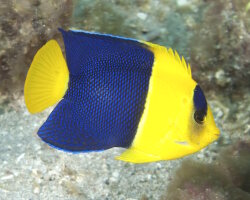
Bicolor angelfish
(Centropyge bicolor)

Black scorpionfish
(Scorpaena porcus)

Bluestriped fangblenny
(Plagiotremus rhinorhynchos)

Common bigeye
(Priacanthus hamrur)

Giant hawkfish
(Cirrhitus rivulatus)

Humpback red snapper
(Lutjanus gibbus)

Reticulated damselfish
(Dascyllus reticulatus)
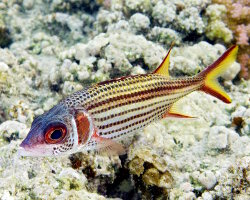
Sammara squirrelfish
(Neoniphon sammara)
The marine species from Florida

Caribbean reef shark
(Carcharhinus perezi)

Doctorfish
(Acanthurus chirurgus)
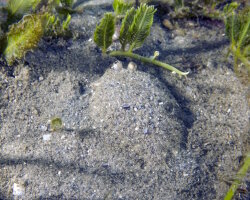
Eyed flounder
(Bothus ocellatus)
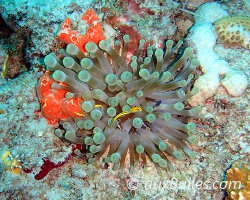
Giant caribbean anemone
(Condylactis gigantea)
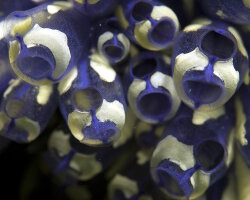
Painted tunicate
(Clavelina picta)
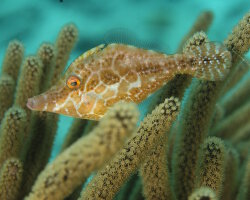
Slender filefish
(Monacanthus tuckeri)

Spanish hogfish
(Bodianus rufus)

Stoplight parrotfish
(Sparisoma viride)
Dive centers

Sea Dwellers Dive Center






















